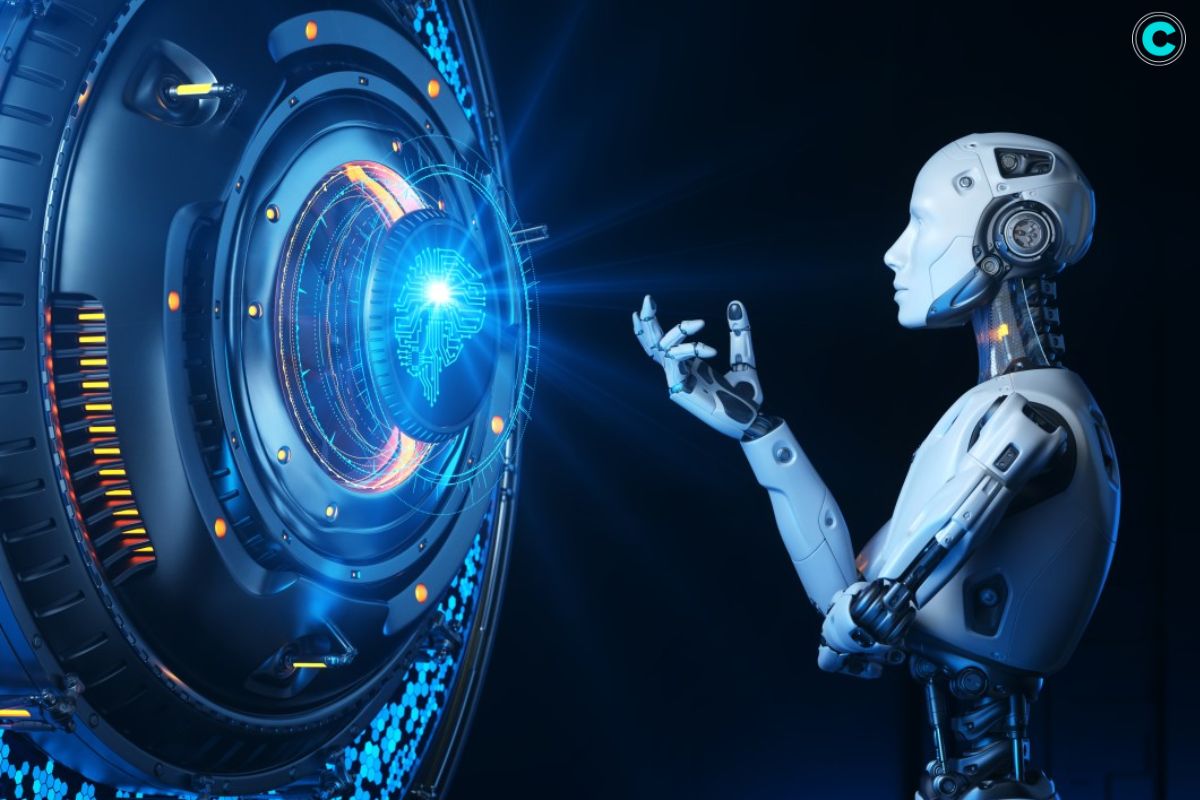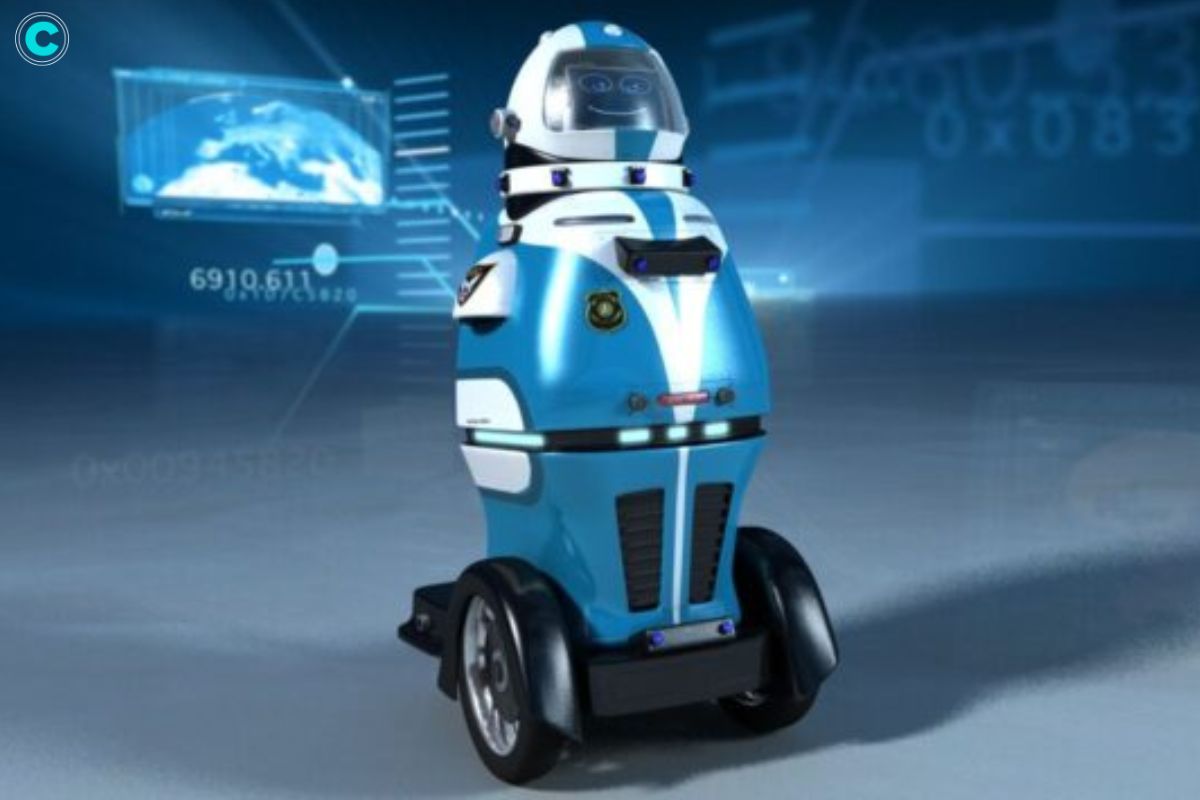(Source – Education in Future Technologies)
Autonomous robots are like superheroes in different industries – they’re changing the game in manufacturing, healthcare, agriculture, and logistics. These smart machines can do tasks all by themselves, with very little help from humans. They use fancy sensors, artificial intelligence (AI), and machine learning to get the job done. In this article, we’ll explore how these robots are developed, where they’re being used, and what we can expect from them in the future.
What Are Autonomous Robots?
An autonomous robot is a machine that can perform tasks on its own without continuous human control. These robots are equipped with sensors to perceive their environment, processors to interpret the data, and actuators to carry out actions. These robots aim to increase efficiency, precision, and safety across different industries.
Key Features of Autonomous Robots
1. Sensors and Perception
They rely on a variety of sensors to understand their surroundings. These include cameras, lidar, radar, and ultrasonic sensors. These devices allow robots to detect obstacles, recognize objects, and navigate through complex environments.
2. Artificial Intelligence and Machine Learning

AI and machine learning algorithms enable them to make decisions based on the data they collect. These technologies help robots learn from experiences, adapt to new situations, and improve their performance over time.
3. Mobility and Navigation
Many robots are designed to move around in their environment. Whether it’s a robotic vacuum cleaner navigating a living room or an autonomous drone surveying a construction site, precise mobility is crucial for these machines. Technologies such as GPS, inertial measurement units (IMUs), and simultaneous localization and mapping (SLAM) play a significant role in their navigation capabilities.
4. Human-Robot Interaction
For them to be effective, they must interact smoothly with humans. This includes understanding human commands, working alongside people, and even recognizing and responding to human emotions in some advanced models.
Applications of Autonomous Robots
1. Manufacturing
These are widely used in manufacturing to perform repetitive tasks with high precision. They can assemble products, handle materials, and even inspect quality. This reduces the risk of human error and increases production efficiency.
2. Healthcare
In healthcare, they assist in surgeries, deliver medications, and sanitize environments. Robots like the da Vinci Surgical System allow surgeons to perform delicate procedures with enhanced precision, while delivery robots transport supplies within hospitals.
3. Agriculture

These robots in agriculture help with planting, harvesting, and monitoring crops. Drones survey fields to assess crop health, while ground-based robots can plant seeds or harvest fruits and vegetables, increasing productivity and reducing labor costs.
4. Logistics and Warehousing
Logistics companies use them for sorting, packing, and transporting goods within warehouses. These robots navigate through warehouse aisles, picking items and preparing them for shipment, thereby speeding up the order fulfillment process.
5. Service and Domestic Use
Robotic vacuum cleaners, lawnmowers, and personal assistants are becoming common in households. These robots perform routine tasks, making daily life more convenient and allowing people to focus on more important activities.
The Future of Autonomous Robots
The future of these robots is promising, with continuous advancements in AI, sensor technology, and computing power. We can expect to see more sophisticated robots capable of performing complex tasks in diverse environments. As technology progresses, these robots will become more integrated into our daily lives, contributing to greater efficiency and improved quality of life.
1. Enhanced Collaboration with Humans
Future autonomous robots will work more closely with humans, taking on tasks that require a high level of collaboration. These robots will be able to understand and respond to human cues more effectively, making them valuable partners in various settings.
2. Greater Adaptability
Advancements in AI will allow these robots to adapt to new and unforeseen circumstances with greater ease. This will enable them to operate in more dynamic and unstructured environments, such as disaster response scenarios.
3. Increased Autonomy
As technology evolves, these robots will require even less human intervention. They will be able to make complex decisions independently, reducing the need for constant supervision and allowing for more autonomous operations.
Challenges Facing Autonomous Robots

1. Technical Limitations
While technology is advancing rapidly, there are still limitations in areas such as battery life, processing power, and sensor accuracy. Overcoming these limitations is essential for the wider adoption of these robots.
2. Safety and Reliability
Ensuring the safety and reliability of these robots is crucial, especially in environments where they interact with humans. Rigorous testing and validation are required to prevent accidents and ensure consistent performance.
3. Ethical and Legal Issues
The deployment of these robots raises ethical and legal questions. Issues such as job displacement, privacy concerns, and liability in case of accidents need to be addressed through thoughtful regulation and policy-making.
4. High Costs
The development and deployment of these robots can be expensive. The initial investment in technology, infrastructure, and training can be a barrier for smaller companies or individuals.
FAQs
1. What is an autonomous robot?
An autonomous robot is a machine capable of performing tasks independently without
continuous human control, using sensors, AI and machine learning to understand and interact with its environment.
2. How do autonomous robots navigate?
These robots use a combination of GPS, sensors, and algorithms like SLAM (simultaneous localization and mapping) to navigate their environment and avoid obstacles.
3. What industries benefit the most from autonomous robots?
Manufacturing, healthcare, agriculture, logistics, and domestic services are some of the industries that benefit significantly from the use of these robots.
4. What are the challenges of using autonomous robots?
Challenges include technical limitations, ensuring safety and reliability, addressing ethical and legal issues, and the high costs associated with development and deployment.
5. What is the future of autonomous robots?
The future of these robots includes enhanced collaboration with humans, greater adaptability to new environments, and increased autonomy, leading to more widespread and sophisticated applications.
Conclusion
These robots are set to transform a wide range of industries by improving efficiency, precision, and safety. From manufacturing and healthcare to agriculture and domestic use, these robots are proving to be valuable tools in modern society. As technology continues to advance, the capabilities of autonomous robots will expand, paving the way for even more innovative applications. However, addressing the technical, safety, ethical, and cost challenges will be essential for their successful integration into our daily lives.






